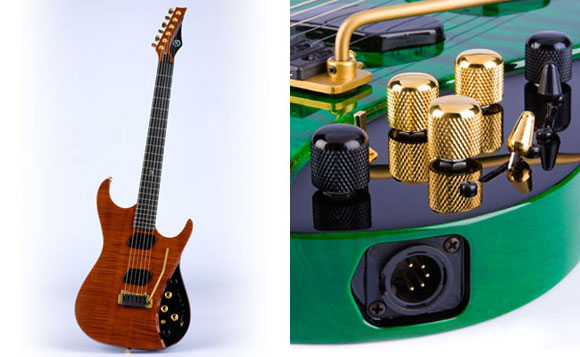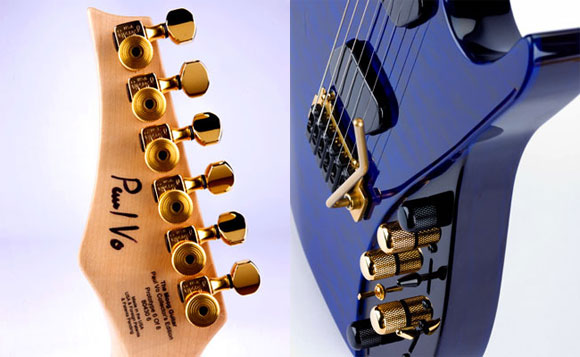Infinite sustain, a Moog filter, and — metallurgy? Welcome to the world of the Moog Guitar. It’s not a digital instrument, and it’s not a synth, but I’d say its unique focus on timbral shaping places it squarely within the interests of folks who read this site, and keeps it true to its Moog name. Too bad its price will likely keep it out of reach for many of us.
As a number of you wrote in to remind us, Moog Music’s new guitar has arrived — yes, actually a guitar. The product description even feels obligated to explain that it’s “Not a guitar synthesizer, not a MIDI guitar or an effects processor; players are intimately connected to The Moog Guitar because it works its magic on the strings themselves.” (Well, hey, some of us are pretty intimately connected to a Moog synthesizer, too — and kind of fascinating that you can have that relationship with something that doesn’t have strings. But this is a guitar story, so I’ll move on.)
Paul Vo is the creator of the instrument and apparently approached Moog with the design, working with Moog’s engineering team and Zion Guitars’ Dale Brown. And then they start talking metallurgy:
The Moog strings that come with guitar have a specific metallurgy designed to work with the Moog Pick-ups. Other strings will work in emergency situations but the guitar will respond best with Moog strings.
Additional note: I personally am inclined to believe this claim about strings despite some grumpy comments below; the difference of specific strings makes a big difference on any instrument. Add pickups — again, on any instrument — and that difference is even more pronounced.

So, what makes it a Moog Guitar?
- Infinite sustain on every string, which has more “power” than other implementations. Sustain is switchable between the “infinite” mode and controlled and mute settings.
- Muting: either sustain just on the notes on which you’re playing, or a unique mute mode for “staccato articulations”
- Harmonic blends allow controlled harmonic sounds from the strings in the other modes
- Built-in Moog ladder filter, controllable by foot pedal or CV input.
- Pickup controls: Piezo, Bridge only, Out of Phase, In Phase, Neck only
The sonic controls sound terrific — not completely unprecedented from what I’ve been told, but still something special. Sticker shock, though, will keep those without deep pockets away; the instrument is US$6495. It may well be worth it, but I know at least some of you have trouble fitting that in your budget.
For further evidence that Moog Music is generally trying to get guitarists’ attention, the new foot pedal we saw at NAMM was designed to be used with Moog effects boxes to place a suite of guitar-ready effects at a guitarists’ feet. (Of course, this wasn’t exclusively intended for guitarists — keyboardists could use it just as happily — but Moog Music hinted this was part of their target audience.)
The instrument is coming June 20, just in time for summer NAMM in Nashville, a town in which I hear there are several guitarists. (Now, Moog Music, if you ever want to make a Moog Banjo, I’m in, as a native Kentuckian. I bleed bluegrass.)
My mate Ben Rogerson over at Future’s musicradar.com has a good overview:
It’s official: Moog launches Guitar
He compares the sustain to the Fernandes Sustainer product line but notes Moog says their version is unique.
Guitarists, what do you think? Will you be getting one? Will you be drooling over one, even if you can’t afford it?

